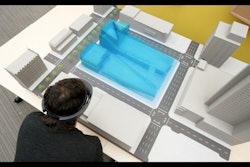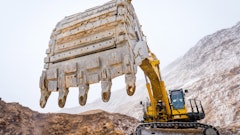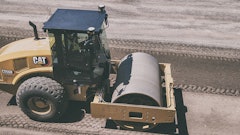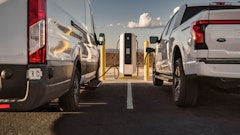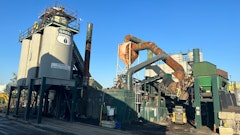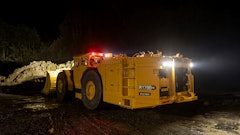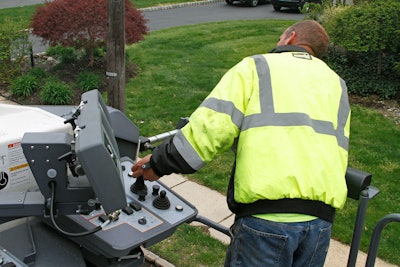
Groff Tractor has been meeting customers' needs since 1958 when its first dealership opened in Highspire, PA, and later moved to Mechanicsburg. Today, Groff Tractor serves Pennsylvania, Maryland, New Jersey, Virginia and West Virginia with 11 locations spread across the region.
The company offers Mauldin asphalt pavers, and Sakai and Wacker Neuson rollers. It’s also a Case dealer and offers wheel loaders and skid steers. Wirtgen Group products, including Wirtgen asphalt milling machines, Vögele asphalt pavers and Hamm asphalt and soil compactors, are offered in Groff Tractor’s central and western Pennsylvania locations.
There is a lot of buzz around telematics these days. These systems are designed to track machines with GPS through a satellite or cell phone. They can monitor equipment location, machine health and machine control, as well as generate utilization and fuel consumption reports. Tracking maintenance is also a huge benefit of using telematics.
Many contractors are interested in telematics and how these systems can benefit their asphalt operations. We talked with Greg Grimes, product & technical specialist with Groff Tractor, and asked him how dealers like him fit into the telematics puzzle.
Q: What is the role of the dealer when it comes to telematics use?
Groff: When it comes to telematics, the role of the dealer is to get utilization and fuel consumption reports for the customer and track machines for scheduling purposes.
Q: What are the specific maintenance benefits telematics can offer a contractor?
Groff: There are specific maintenance benefits that telematics offer a contractor. Since the system tracks the machine, you know when the machine is due for service. It automatically tells you it's within 50 hours of when service is due, which gives you enough time to schedule service in advance.
You can put this in your plan and it's less confusing. Telematics tells the contractor certain things that can go in a plan, and also what machines can be moved to different sites if not in use.
There is no need to make calls to find out where the machines are located. With telematics, directions are printed. So, the technician knows how to get to the machine's location by GPS to service it. Error codes reveal certain machine conditions, such as if the transmission is hot or the cooler is clogged.
Q: What types of maintenance can be tracked by a telematics system?
Groff: Types of maintenance that can be tracked by a telematics system include service intervals, fuel consumption, utilization, and machine conditions.
You will know by the amount of hours what service is due. If the system alerts you that service is due, it is not going to alert you that it needs a specific part, but will tell you it is within 50 hours of service. Then we know what level of service it's at and know what needs to be done before going out to service it.
There are 19 functions that monitor for problems if they occur, including engine temperature, engine oil pressure and hydraulic temperature.
Utilization is tracked, not in the maintenance side of it, but tracked by the system. If a machine is not healthy and it has a problem, an error code appears. You then determine what the error code indicates, such as the cooler is clogged, and figure out what you would need and if you should send parts to the field for service.
Q: What is the best way a contractor can partner with a dealer to optimize their use of telematics?
Groff: Contractors may be wary of having someone know everything they do during the project, but most are happy to have the dealer help them.
There is a 3-year/3,000-hour site watch subscription that contractors receive when purchasing or renting/leasing equipment with telematics. When that runs out, the contractor will need to purchase a subscription to have the benefits of telematics.
Equipment without telematics do not come with a free service contract. When a machine is sold, we gather information from the customer on who they want to be alerted, if there is a problem. You’ll need an administrator.
When a machine is purchased, the contractor has the right to determine if just their personnel should be on the system, but in most cases, the contractor wants the dealer's help. Having the dealer monitor the system allows the contractor to focus on other things.
Dealers alert them of problems and contact them to come out and service the machines.
Q: Where does the manufacturer/equipment supplier fit into the equation?
Groff: The manufacturer/equipment supplier fits into the equation when it comes to tracking the health or condition of the machine through the warranty period.
The machine will be under warranty if all the service requirements have been met. So, in the end, if the customer has not serviced the machine properly, the manufacturer can deny the warranty claim. Once the sale is complete, the manufacturer no longer gets involved in telematics. The customer has the right to determine who monitors the telematics once the machine is purchased."
Q: How can a contractor coordinate all his equipment with the same telematics system? Can existing pieces of equipment in his fleet be retrofitted with a system?
Groff: With the telematics system, contractors can easily look at their fleet and determine the location of each machine to most efficiently coordinate transport or schedule maintenance.
Q: What else is important to know about telematics?
Groff: Telematics systems are well received by customers because of the benefits and user friendliness. Within the three years of the site watch subscription, the contractor realizes the benefits, and then starts paying to keep it active.
Just having one machine stolen makes the use of telematics worth its cost. Since machines equipped with telematics are new, there is not much used equipment with telematics available now.
Overall, customers are more comfortable with telematics now and want it. Some customers are leery because they think there are these big eyes in the sky watching everything they do. Telematics constantly monitors the machine. Most manufactures have it. It's the future.

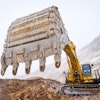


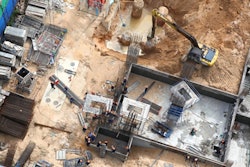
![[VIDEO] Caterpillar Shows How Virtually Reality Can Improve Field Diagnostics](https://img.forconstructionpros.com/files/base/acbm/fcp/image/2016/06/default.5764340cc06b3.png?auto=format%2Ccompress&fit=crop&h=167&q=70&w=250)
